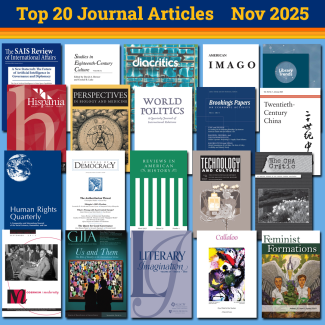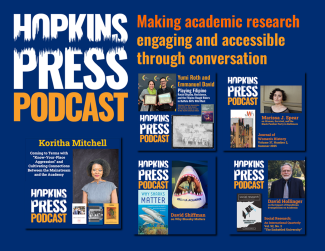
Johns Hopkins UniversityEst. 1876
America’s First Research University
Now Browsing:
Tales from the assistant's desk: theories of peer review
by Jennifer Malat, Acquisitions Assistant
Before I started to work in academic publishing, I thought of peer review as that high school English class staple “swap your essay with a classmate for comments.” You look over someone else’s essay, fix some typos, and correct any egregious errors. If more people read your essay, more mistakes would be corrected. Simple, right?
But in academia the process is more complicated. Many debates exist regarding the best type of peer review, from anonymous reviewers to open peer review. Does anonymity encourage honesty or hurt open scholarship? “Peer” can also be a tricky definition. If a book combines multiple disciplines, such as history and sociology, should you get reviewers from each field? How many from each? Does the reviewer know the author? Should you solicit reviews from scholars with a similar understanding of the subject, or from those who support an opposing school of thought? What if the author is the leading expert on a topic and nobody wants to question his or her methods? Acquisitions editors put a lot of time and energy into these questions, seeking appropriate and fair reviewers who want to help improve a manuscript.
Peer review is a major part of academic publishing. If your colleagues do not feel your ideas have merit, nobody will want to read your book. Having a peer review process is also a requirement for membership in the Association of American University Presses. Scholars use peer review to ensure that their work is credible, accurate, and worthy of publication.
During a summer history class, I learned that scholarly peer review has been tied to publishing from its inception. In fact, the invention of printing during the Renaissance created a flurry of peer review. Scholars no longer had to travel to the lone copy of a book tucked in the library of a monastery or laboriously make a copy by hand. Scholars could look at identical copies of a text and compare ideas, replicate experiments, and publish reactions.
No ink pots and quill pens for us: we typically email book proposals or manuscripts, granting even an international reviewer instant access to a project. Despite these technological advances and methodological debates, the goals of peer review remain unchanged. Our reviewers are eminent scholars and specialists who want to share their knowledge and promote accurate scholarship. As an academic publisher, we want books to start a conversation. Peer review represents the first step in moving that conversation to a public arena.
Login to View & Leave Comments
Login to View & Leave Comments

